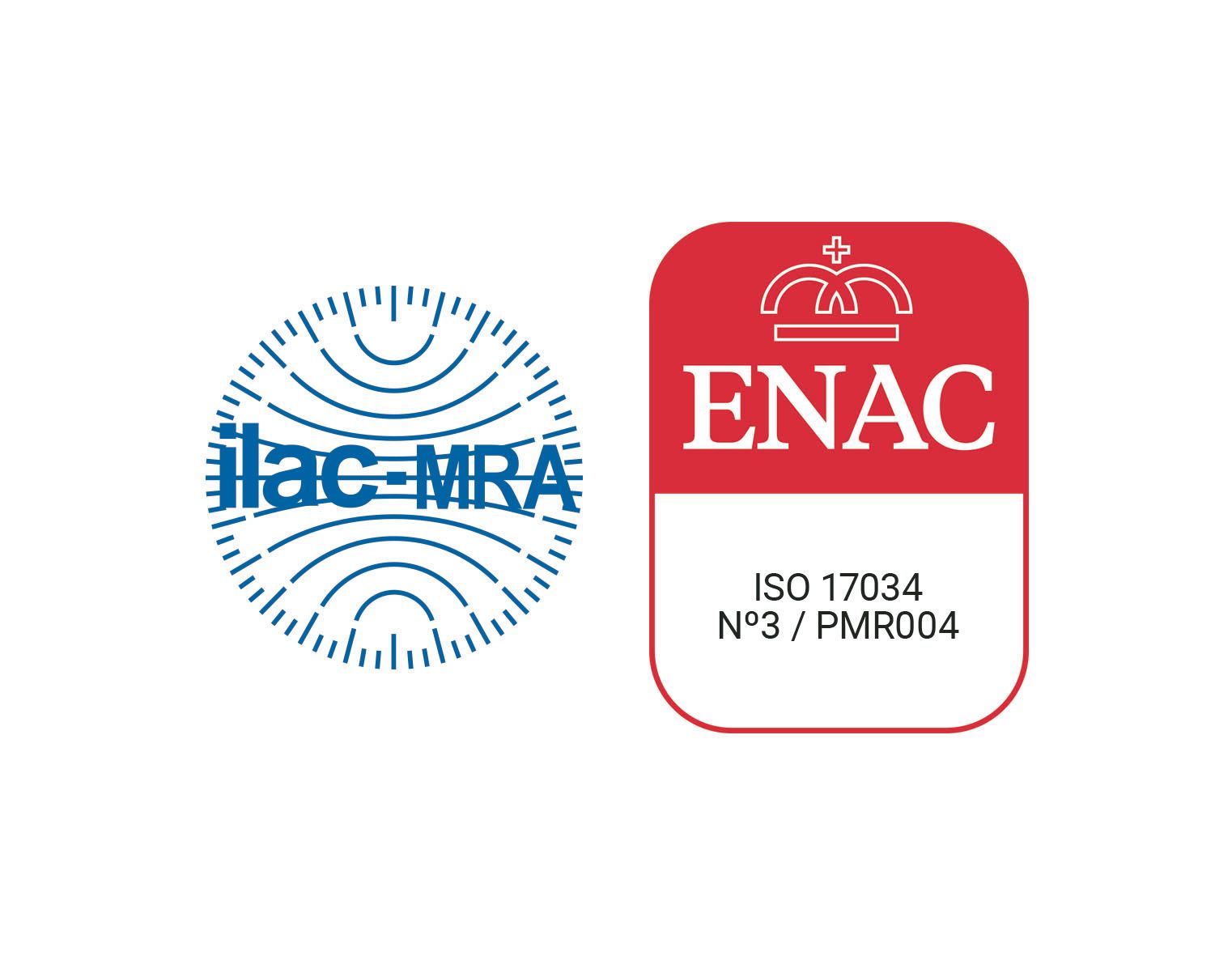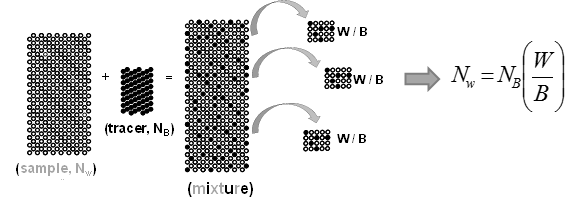

ISC-Science has been manufacturing Inorganic Isotopic Standards and Organometallic Isotopic Standards for Quantitative Analysis for nearly 20 years. In that time, ISC-Science has established itself as the most trusted manufacturer of Isotopic Standards. In addition, ISC-Science has expanded its product line and accreditation scope to include Certified Reference Materials for the determination of Elements in Drinking Water. These materials are manufactured and certified according to ISO 17034.
A reference material is a material or substance for which one or more property values are sufficiently homogeneous and stable to be used for calibrating an instrument, evaluating a measurement method, or assigning values to materials. In other words, they are a kind of measurement standard that we can use for calibration, estimation of uncertainties and verification of test methods.
Therefore, reference materials are a very important tool for validation and quality control of test methodologies. The implementation of a quality control system in a laboratory requires, among other things, that the quality and accuracy of the results of the measures can be demonstrated. It must be possible to guarantee the traceability of the results obtained, both in calibration and in tests. This can be achieved using Certified Reference Materials.
 ISC-Science is a Reference Material Producer accredited by ENAC with accreditation no. 3/PMR004. The marked activities (*) are neither covered by ENAC accreditation nor its international recognition agreements. ENAC is a signatory to the EA and ILAC Multilateral Agreements for Reference Material Producers.
ISC-Science is a Reference Material Producer accredited by ENAC with accreditation no. 3/PMR004. The marked activities (*) are neither covered by ENAC accreditation nor its international recognition agreements. ENAC is a signatory to the EA and ILAC Multilateral Agreements for Reference Material Producers.
Check the Technical Annex here.
![]()
Certified Reference Materials (CRMs) of elements in drinking water. Produced and certified in element concentration according to ISO 17034.

Certified Reference Materials (CRMs) of Elemental isotopic standards for Isotope Dilution Analysis (ID-MS). Produced and certified according to ISO 17034.

Reference Materials (RMs) of Isotopically enriched organic compounds for Isotope Dilution Analysis. Produced and characterized according to ISO 17034.
Isotope Dilution Analysis is based on the modification of the isotopic composition of a sample by the addition of a known amount of an isotopically enriched element or compound generally called tracer or spike. The general concept of isotope dilution can be explained using a simple analogy: How can we determine the large number of white marbles (Nw) inside a box?
Although, the simplest way is to count all the marbles it is a very time consuming process and we can commit errors. The best way is to resort of a kind of "dilution" using a known amount of black marbles (Nb). The marbles have the same size and properties, the only difference between the white and the black marbles is their colour, which allows us to apply the concept of "dilution" to determine the number of white marbles in the in the box. For that purpose, the black marbles are added to the white marbles in the box. Once black and white marbles are mixed forming a homogenous mixture, a sample of the mixture is taken and the white (W) and black (B) marbles are counted, obtaining this way the relation shown in the figure.
If another sample is taken out of the box, a different number of white (W) and black (B) marbles could be obtained, though the relation W/B will remain the same. The total number of white marbles in the initial sample can be determined according to the following equation:
Nw= Nb(W/B)
This is the basic concept of isotope dilution analysis that uses the existence of isotopes of the elements and the isotope ratio measurements to quantify elements or compounds with very high accuracy and precision. Isotope dilution analysis provides several unique advantages in relation to classical approaches and is considered a primary method directly traceable to the International System of Units (SI).

The elemental analysis by isotope dilution is based on the intentional modification of the isotopic abundances of the element to be determined in the sample though the addition of a known amount of an enriched isotope of the same element (tracer). The majority of the elements of the periodic table possess more than one isotope, therefore they can be determined by this methodology.
If we consider the number of moles of a poly-isotopic element present in a sample Ns and the number of moles of the same element in the tracer Nt added to the sample, the number of moles of the element in the mixture Nm is given by:
Nm = Ns + Nt
In the same way, we can establish mass balances for the isotopes a and b:
Nma = Nsa + Nta
Nmb = Nsb + Ntb
If we divide the two equations the isotope ratio of the isotopes (a/b) in the mixture (Rm) can be obtained. When taken into account the abundances of the isotopes a and b in the sample (Asa and Asb) and in the tracer (Ata and Atb), the isotope ratio can be expressed as:
Nma Nsa + Nta NsAsa + NtAta
Rm = ----- = ----------- = -----------------
Nmb Nsb + Ntb NsAsb + NtAtb
where
Nsa = NsAsa; Nta = NtAta
Nsb = NsAsb; Ntb = NtAtb
Rearranging for Ns we obtain:
RmAtb - Ata
Ns = Nt ---------------
Asa - RmAsb
This equation expresses the number of moles of the element in the sample as a function of the number of moles of the tracer added and the abundances of both, as well as the measured isotope ratio. If we define Rs and Rt as the isotope ratio of the isotope b/a and a/b for the sample and the tracer, respectively, the number of moles of the element in the initial sample is given by:
Atb Rm-Rt
Ns = Nt ---- ---------
Asa 1-RmRs
This equation can be transformed as a function of the analyte concentration considering the masses of the sample and the tracer that were taken, ms and mt; the atomic weights of the element in the sample and in the tracer, respectively, Ms and Mt. By substitution, the final isotope dilution equation is obtained:
mt Ms Atb Rm - Rt
Cs = Ct ----- ------ ------ ----------
ms Mt Asa 1 - RmRs
In this equation the concentration of the element in the initial sample Cs can be determined directly by measuring just the isotope ratio in the mixture Rm, since all other parameters of the equation are known or measurable. If the element has natural isotopic composition the values Ms, Asa and Rs can be obtained from the IUPAC tables of isotopic composition and atomic weights of the elements.
Isotope dilution analysis provides several advantages compared to other analytical techniques that use methodological calibrations. As can be seen in the equation, the isotope dilution equation does not contain any parameters that are dependant of the instrumental sensitivity, therefore posible factors that affect the instrument's sensitivity like signal drift or matrix effects don't affect the final result. Further, once sample and tracer have formed a homogeneous mixture, any loss of the sample during sample preparation does not change the final result, since any aliquot of the sample will have the same Rm during the whole process.
From 3 to 26 July (both inclusive):
From 28 July to 1 September (both inclusive): No deliveries of any type of orders will be made and no quotations will be prepared. Orders/quotations received/requested between these dates will be processed after September 1st.